Work-Related Asbestos Exposure Injury Claims: Were You or a Loved One Injured After Being Exposed To Asbestos
The escalating concern over work-related asbestos exposure and its consequent impact on employee health necessitates a critical examination of legal pathways for victims seeking compensation. With historical data revealing the pervasive risk of asbestos in various industries, particularly in construction and manufacturing since the 1940s, the potential for asbestos-related diseases looms large for a significant segment of the workforce. This situation underscores the importance of recognizing early signs of asbestos illness and understanding the intricate process of filing an injury claim. For those navigating the complexities of such claims, the question arises: what essential steps must be taken to ensure justice and financial support for affected individuals and their families? This discussion aims to shed light on these pivotal considerations.
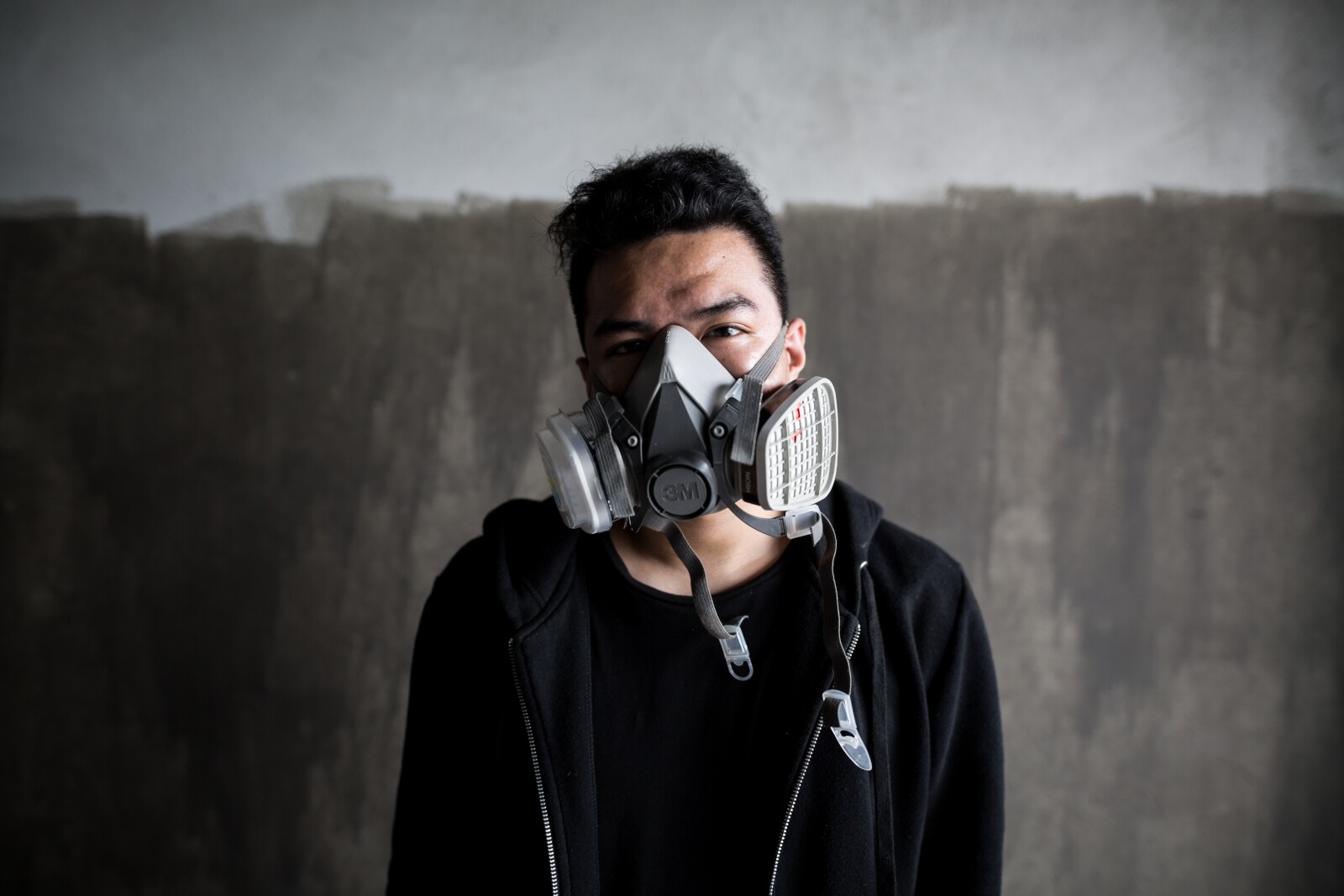
Understanding Asbestos Exposure
Asbestos exposure, often encountered during the renovation or repair of older buildings containing this hazardous material, poses significant health risks to workers in the construction and building trades. This fibrous mineral, once widely used for its fire-resistant properties, can lead to severe respiratory illnesses, including asbestosis, lung cancer, and mesothelioma, when its fibers become airborne and inhaled. The Occupational Safety and Health Administration (OSHA) and the Centers for Disease Control and Prevention (CDC) report that despite strict regulations and safety protocols, exposure risks remain. Notably, the latency period for asbestos-related diseases can extend from 10 to 40 years, making early detection challenging and underscoring the importance of protective measures and awareness for those working in environments where asbestos is present.
Common Exposure Occupations
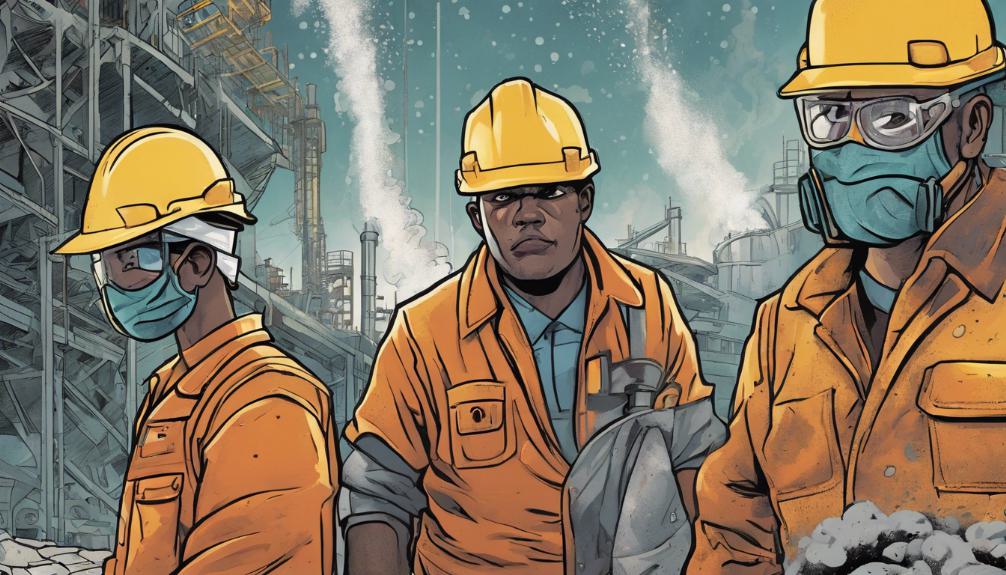
Understanding the significant health risks associated with asbestos exposure, it becomes crucial to identify the occupations most frequently confronting these hazards. The CDC reports highlight that repair, renovation, and maintenance work, particularly within older buildings containing asbestos products, are high-risk activities. OSHA's estimates reveal that approximately 1.3 million employees in the building and construction trades could potentially be exposed to asbestos, underlining the widespread nature of the risk in these sectors. Over the decades, tens of millions of U.S. workers across various industries have been exposed to asbestos, with the majority of asbestos-related illnesses manifesting among those who have encountered regular exposure in their workplace. This underscores the critical need for awareness and protective measures in these high-risk occupations to safeguard worker health.
Signs of Asbestos Illness
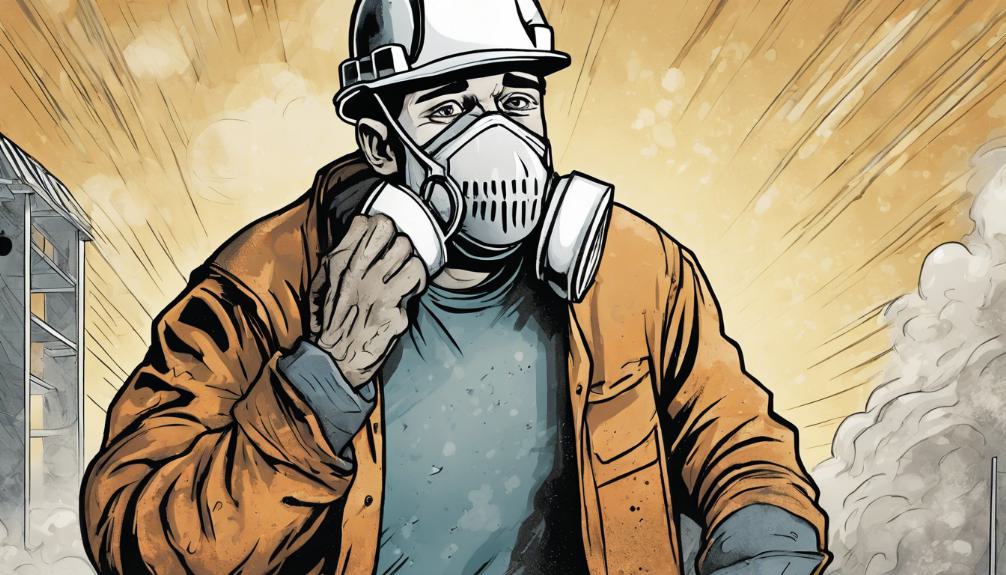
Identifying the early signs of asbestos-related illness is crucial for those exposed to this hazardous material at work. Asbestos exposure can lead to several serious health conditions, many of which take years to manifest. Early symptoms often resemble less serious respiratory issues, making them easy to overlook. Common signs include persistent cough, shortness of breath, chest tightness, and unusual weight loss. As the illness progresses, individuals may experience more severe symptoms such as difficulty swallowing, swelling of the neck or face, and the appearance of a bluish tint on the skin due to lack of oxygen. Recognizing these symptoms early on is vital for seeking appropriate medical intervention and managing the condition effectively.
Legal Options for Victims
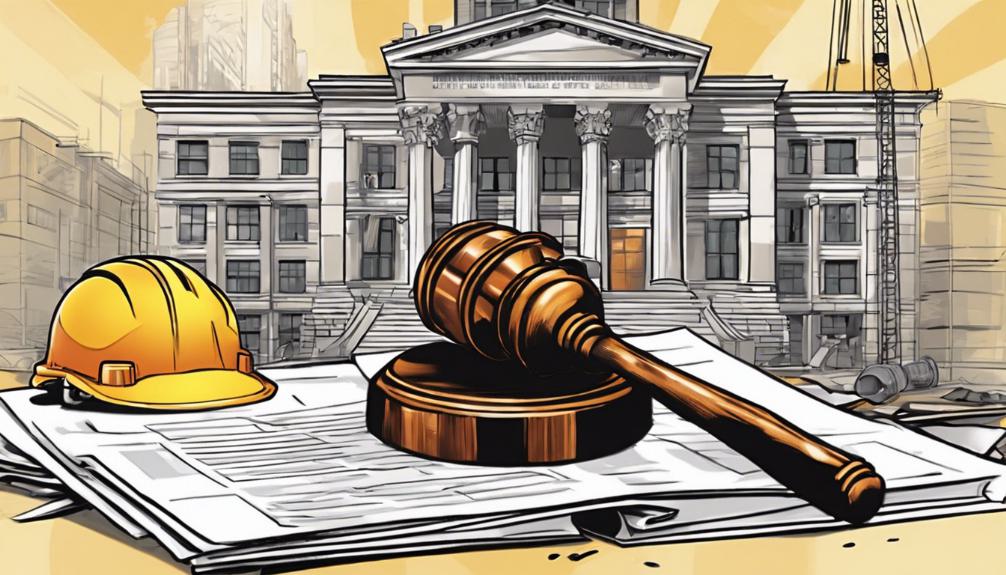
Recognizing the early signs of asbestos-related illness is crucial, and for those affected, exploring legal options can provide a pathway to compensation and justice. Victims of work-related asbestos exposure have the right to seek legal redress, which can include filing lawsuits against employers, product manufacturers, or other parties responsible for the exposure. Legal recourse can result in financial compensation for medical expenses, lost wages, and pain and suffering. Consulting with a specialized injury lawyer can offer guidance on the complexities of asbestos litigation and help ascertain the viability of a case. Additionally, some victims may qualify for claims through asbestos trust funds, established by bankrupt companies to compensate workers. Navigating these legal avenues requires expert advice to ensure the best possible outcome.
Filing an Injury Claim

Initiating a claim for an injury related to work-place asbestos exposure is a crucial step towards obtaining deserved compensation and justice for the affected individuals. This process begins with gathering comprehensive evidence of exposure and its resultant health impact. Victims or their families should document work history, medical records, and any direct links between the exposure and diagnosed conditions. Consulting an experienced injury lawyer who specializes in asbestos-related cases can guide claimants through the legal intricacies. These professionals can help identify the responsible parties—whether manufacturers of asbestos-containing materials or employers—and establish the basis for a claim. Early legal advice is essential to navigate statute limitations and ensure a well-prepared case, enhancing the prospects for a successful claim.
Potential Compensation Types

Following the process of filing an injury claim, it is crucial to understand the various types of compensation that victims of work-related asbestos exposure may be entitled to receive. These compensations typically cover medical expenses, including costs for diagnosis and treatment of asbestos-related diseases. Victims may also be compensated for lost wages due to inability to work, and in some cases, for future lost earnings. Pain and suffering, both physical and emotional, resulting from the illness, are also grounds for compensation. In severe cases, families of victims who have died from asbestos-related illnesses may seek wrongful death compensation, which can cover funeral expenses and loss of consortium. Understanding these potential compensation types is vital for those affected by work-related asbestos exposure.
Choosing the Right Attorney

Selecting a knowledgeable attorney is crucial for navigating the complexities of work-related asbestos exposure claims. The right legal counsel understands the intricacies of asbestos-related law, including the long latency periods of related illnesses and the historical context of asbestos use in various industries. Look for attorneys with a proven track record in handling similar cases, as their experience can significantly impact the outcome of your claim. They should be well-versed in the latest legal developments and possess the resources to thoroughly investigate your case. An ideal attorney also demonstrates empathy, offering personalized attention while aggressively advocating on your behalf. Ensure they're transparent about their fee structure and have a clear communication line, making the legal process as smooth as possible for you.
Lawsuit Process Overview

Understanding the lawsuit process for work-related asbestos exposure claims is crucial for individuals seeking compensation for their injuries. Initially, the claimant must prove their exposure to asbestos occurred due to negligence on the part of their employer or another party. This involves gathering medical records, employment history, and evidence of asbestos presence. The next step is filing a lawsuit, which a specialized attorney can assist with, ensuring all legal requirements are met. The process may involve negotiations for a settlement or, if necessary, proceeding to trial. Throughout, it's essential to adhere to state-specific statutes of limitations, which dictate the timeframe within which a lawsuit must be filed. Successfully navigating these steps can lead to compensation for medical expenses, lost wages, and pain and suffering.
Avoiding Common Claim Mistakes
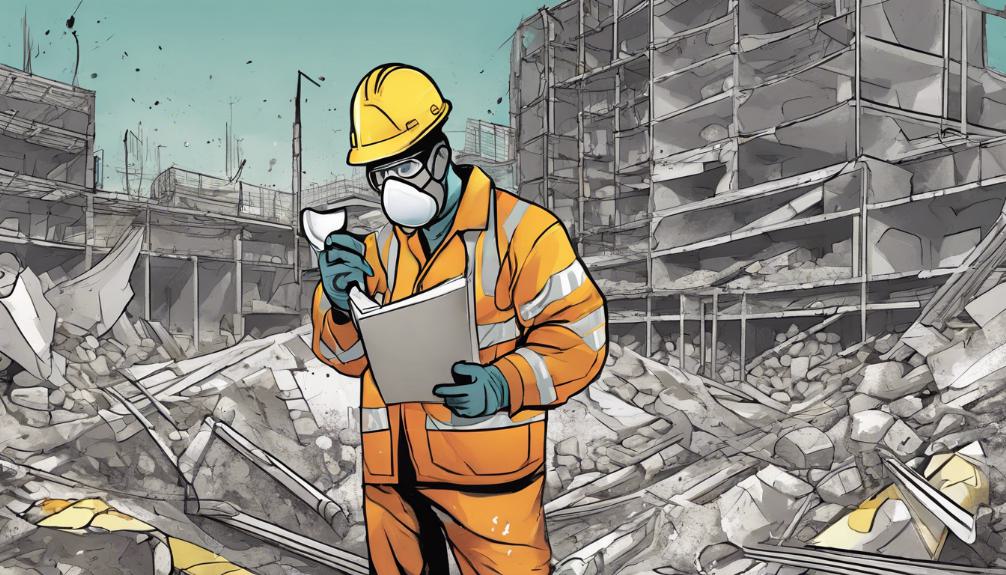
To prevent potential pitfalls in filing a work-related asbestos exposure claim, individuals must be aware of common mistakes that can undermine their case. One significant error is failing to accurately document the exposure and its impact on health, which is crucial for substantiating the claim. Another mistake is missing critical deadlines for filing claims, as legal time limits—statutes of limitations—vary by state and can be complex. Additionally, claimants often underestimate the value of seeking specialized legal representation. Lawyers experienced in asbestos-related cases can navigate the intricate legal landscape, ensuring all procedural requirements are met and maximizing the potential compensation. Avoiding these mistakes can significantly improve the chances of a successful claim outcome.
Supporting Affected Family Members
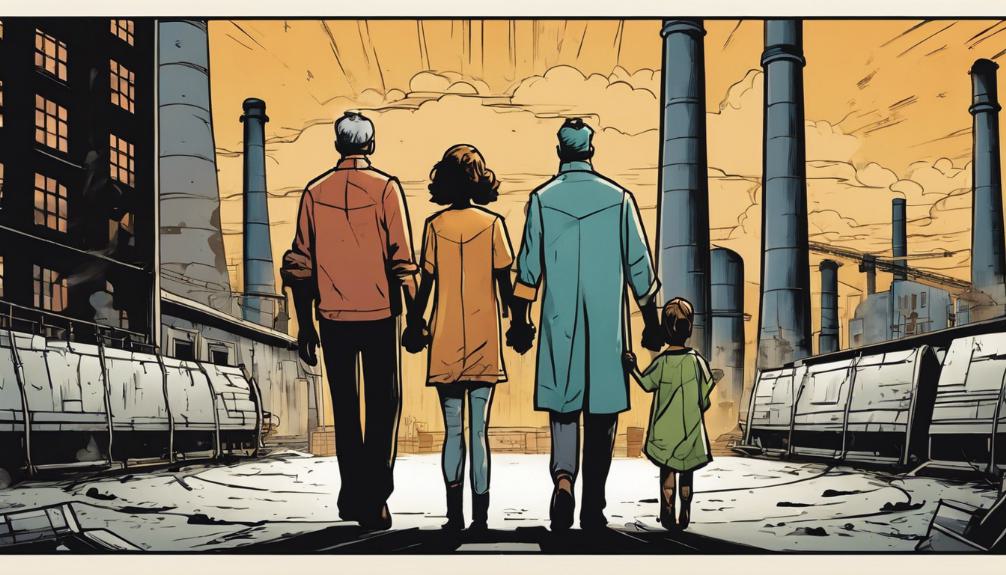
While navigating the complexities of filing a work-related asbestos exposure claim, it's equally important to consider the emotional and financial support needed by family members of those affected. The trauma of asbestos-related illnesses extends beyond the patient, deeply impacting their loved ones. Families may encounter financial strains due to medical bills, lost wages, and the need for ongoing care. Emotional support is also crucial as dealing with a loved one's illness can be psychologically taxing. Providing a strong support system, including counseling and support groups, can help mitigate these challenges. Moreover, engaging a knowledgeable attorney can ease the legal burden, allowing families to focus more on emotional well-being and less on financial concerns.
Frequently Asked Questions
How Does Secondhand Asbestos Exposure Occur, and Can Family Members of Exposed Workers File for Compensation?
Secondhand asbestos exposure occurs when fibers are brought home on the clothing, skin, or personal items of workers, indirectly exposing their families. Family members who have developed illnesses due to this indirect exposure may be eligible to file for compensation. It is advised to consult with an injury lawyer experienced in asbestos-related cases to explore legal options and potentially pursue a claim for damages resulting from secondhand asbestos exposure.
This Question Delves Into the Less Commonly Addressed Issue of Secondary Exposure, Which Happens When Workers Bring Home Asbestos Fibers on Their Clothing or Equipment, Potentially Exposing Their Families.
Secondary asbestos exposure occurs when individuals indirectly come into contact with asbestos through fibers brought home on the clothing, hair, or equipment of workers. This form of exposure can affect family members of those who work in environments with asbestos, leading to potential health risks. Such cases highlight the importance of understanding the broader impact of asbestos exposure, extending beyond direct workplace environments, and the need for appropriate legal and health frameworks to address these risks.
Are There Any Specific Health Monitoring Programs Available for Workers Who Have Been Historically Exposed to Asbestos but Are Not yet Showing Symptoms?
For workers historically exposed to asbestos without showing immediate symptoms, health monitoring programs are essential. These programs aim to identify early signs of asbestos-related diseases, facilitating timely intervention and treatment. Employers and health organizations often implement such programs, emphasizing regular health assessments and screenings. Workers are encouraged to participate actively in these programs to monitor their health closely and mitigate potential long-term health risks associated with asbestos exposure.
This Question Seeks Information on Preventive Measures and Health Monitoring for Asymptomatic Individuals Who Have Been Exposed to Asbestos, Which Might Not Be a Common Topic in General Discussions About Asbestos Exposure and Legal Recourse.
This inquiry focuses on the preventive measures and health monitoring available for individuals who have been exposed to asbestos but are not yet symptomatic. It highlights the importance of early detection and intervention strategies for those at risk of asbestos-related diseases. Addressing this aspect is crucial for enhancing the safety and health outcomes of potentially exposed individuals, underscoring the need for comprehensive health surveillance and preventive measures in occupational settings.
How Does the Statute of Limitations for Filing an Asbestos-Related Injury Claim Vary by State, and What Implications Does It Have for Victims Seeking Compensation?
The statute of limitations for filing an asbestos-related injury claim differs significantly across states, affecting victims' ability to seek compensation. These legal deadlines vary, requiring claims to be filed within a certain timeframe after diagnosis or discovery of the disease. This variation can significantly impact the legal recourse available to victims, necessitating prompt action and consultation with a knowledgeable attorney to navigate these complexities and maximize the potential for obtaining rightful compensation.

This post has been generated by AI and was not reviewed by editors. This is Not legal advice. Please consult with an attorney.




